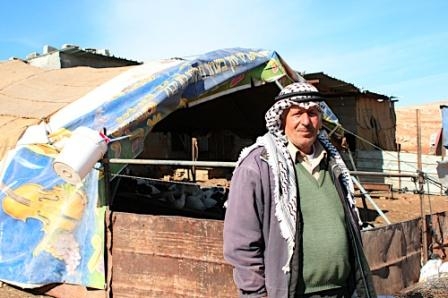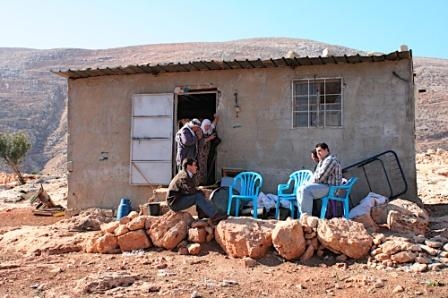JERUSALEM – February 5, 2009 – The High Court of Justice rejected last week (January 26) a petition submitted by the Association for Civil Rights in Israel (ACRI) and Rabbis for Human Rights on behalf of the Palestinian residents of Khirbet Tana, effectively allowing the State to destroy all of the village’s houses but one, despite the lack of viable planning alternatives for the area’s Palestinian residents.
The Court rejected the petitioners’ assertion that in light of the fundamental failure of the Israeli Civil Administration in the West Bank to issue any building or development plan for Khirbet Tana since 1967, it is up to the State to provide just solutions to ensure residents’ right to adequate housing.
The lack of appropriate outline plans for Palestinians in Area C and the preferential treatment of Israeli settlers in this area represent a longstanding trend of discrimination in building and planning policy on the part of the Israeli authorities. It leaves Palestinian residents of the area with two alternatives: to build illegally or to abandon their homes; building permits can only be obtained from the Israeli authorities if an outline plan exists. Of 149 Palestinian villages and communities in Area C – which comprises 60% of the West Bank – outline plans have been designated for only 16, with an additional two holding separate plans.
“At a time when we are hearing reports on mass illegal construction in settlements and outposts, we received yet another reminder of the courts’ determination to enforce planning and construction laws – when it comes to Palestinians, that is” said ACRI Attorney Nasrat Dakwar, who submitted the petition on behalf of ACRI. “Using a false pretense of legal and ‘kosher’ planning policy, the High Court of Justice approved the destruction of a Palestinian village and the eviction of its inhabitants.”
Background: Khirbet Tana, located in the Nablus region and designated as Area C, is home to some 200 people. In 1967, when Israel conquered the area, locals were living in caves, and the only standing structure in the village was the local mosque. Forty-two years later, the Israeli authorities have yet to provide or approve an outline plan for the village, and have created a system whereby West Bank Palestinians are denied any representation in the planning process.
With no construction plans authorized for decades in Khirbet Tana, and the unwillingness of village residents to move from their historic lands or alternatively continue residing in caves, villagers had built homes without proper authorization. In 2005, the Civil Administration destroyed all the houses seeing as they lacked the required permits. With no better alternative, locals rebuilt their houses. In 2008 the State once again announced its intention to destroy all the houses but one, claiming the area – where people have been living since 1967 – is used as a firing zone for the army.
At the same time, the Israeli Civil Administration has authorized the construction, building and modern infrastructure development of settlements and outposts in the village’s vicinity and throughout the West Bank, allowing Israelis access to and possession of vast territories and denying this to the indigenous Palestinian population.









